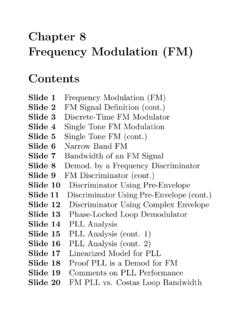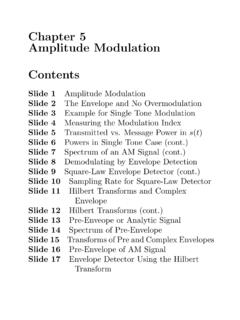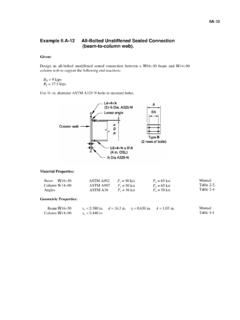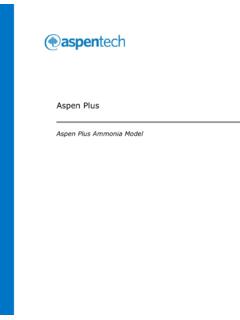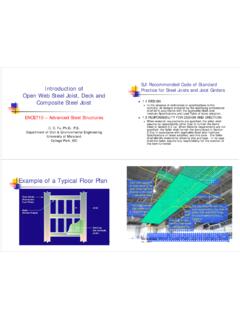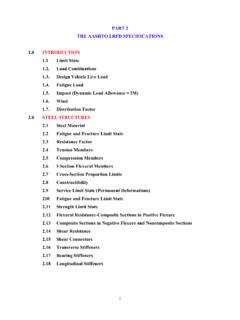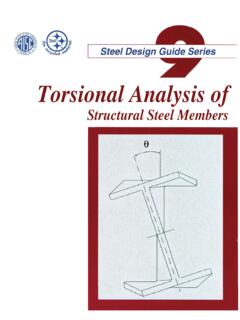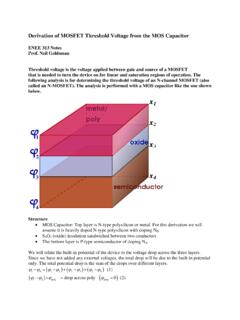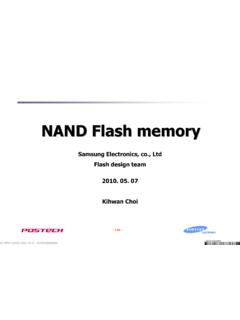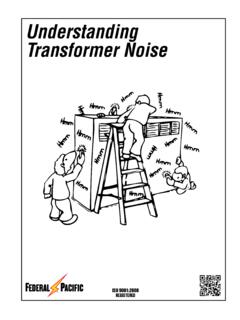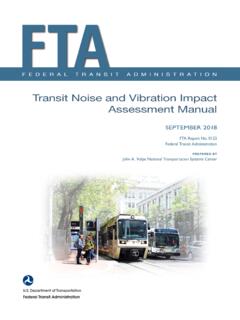Transcription of Chapter 7 Single-SidebandModulation(SSB) andFrequency ...
1 Chapter 7 Single-Sideband Modulation (SSB)and frequency TranslationContentsSlide 1 Single-Sideband ModulationSlide 2 SSB by DSBSC-AM and FilteringSlide 3 SSB by DSBSC-AM and Filtering (cont.)Slide 4 SSB and Hilbert TransformsSlide 5 SSB and Hilbert Transforms (cont. 1)Slide 6 SSB and Hilbert Transforms (cont. 2)Slide 6 SSB Modulator Using a Hilbert TransformSlide 7 Another Derivation of the SSBR epresentationSlide 8 Transforms in Generating SSB SignalSlide 9 Coherent SSB DemodulationSlide 10 Coherent Demodulation (cont.)Slide 11 Demodulator Using a Hilbert TransformSlide 12 Demod. Using a Hilbert Transform (cont.)Slide 13 Using a Pilot ToneSlide 14 frequency TranslationSlide 15 frequency Translation (cont.)
2 1)Slide 16 frequency Translation (cont. 2)Slide 17 frequency Translation (cont. 3)Laboratory ExperimentsSlide 18 Making an SSB ModulatorSlide 19 An SSB Modulator (cont. 1)Slide 20 Coherent SSB DemodulatorSlide 21 A Demodulator Block DiagramSlide 22 Extracting the Pilot ToneSlide 23 Pilot Tone Extraction FiltersSlide 24 Coherent Demodulator (cont.)Slide 24 Theory of the Pilot Tone FiltersSlide 25 Tone Filter Theory (cont.)Slide 26 Tone Filter Theory (cont.)Slide 27 Tone Filter Theory (cont.)Slide 28 Tone Filter Theory (cont.)Slide 29 Theoretical ExerciseSlide 29 Experimental ExercisesSlide 30 Experimental Exercises (cont.)Slide 31 Experimental Exercises (cont.) Chapter 7 Single-Sideband Modulation (SSB)and frequency TranslationRemember that an AM signals(t) =Ac[1 +kam(t)] cos cthas the Fourier transformS( ) =Ac ( + c) +Ac ( c)+Ac2kaM( + c) +Ac2kaM( c) The spectral components in the AM signalequal distances above and below the carrierfrequency contain identical informationbecause they are complex conjugates of eachother.
3 The portion above the carrier frequency iscalled theupper sidebandand the portionbelow thelower SSB Modulation by DSBSC-AM andFiltering Insingle-sideband(SSB) modulation only theupper sideband or the lower sideband istransmitted. Thus, SSB modulation requireshalf the bandwidth of AM or DSBSC-AMmodulation. We will assume that the baseband messagesignalm(t) is band limited with a cutofffrequencyWwhich is less than the carrierfrequency c. Then the required channelbandwidth for an SSB signal isW. m(t)Accos ct H( )s(t)a(t)Figure 1: SSB Modulator Using DSBSC-AM andFiltering7-2 SSB Modulation by DSBSC-AM andFiltering (cont.)First the DSBSC-AM signala(t) =Acm(t) cos ctis formed which has the transformA( ) = ( c) + ( + c)and is centered at the carrier frequency ( ) selects the desired sideband.
4 Uppersideband modulation uses the highpass filterHu( ) = 1 for| |> c0 elsewhereand the lower sideband SSB modulation uses thelowpass filterH ( ) = 1for| |< c0elsewhere7-3 Representing SSB Signals in Terms ofHilbert TransformsLet the baseband message bem(t) and its Hilberttransform m(t). The pre-envelope of the SSBsignal has the transformS+( ) = 2S( )u( )= 2A( )H( )u( )=AcM( c)H( )u( )and the transform of its complex envelope is S( ) =S+( + c) =AcM( )H( + c)u( + c)Upper Sideband CaseSubstitutingHu( ) forH( ) gives S( ) =AcM( )u( ) = ( )(1 + sign )= ( )[1 +j( jsign )]= ( ) + M( )7-4 Hilbert Transform Representation (cont. 1)The complex envelope is s(t) = [m(t) +j m(t)]Therefore, the SSB signal can be expressed ass(t) = e{ s(t)ej ct}= e{[m(t) +j m(t)]ej ct}= (t) cos ct m(t) sin ctLower Sideband CaseThe transform of the complex envelope is S( ) =AcM( )u( )= ( )(1 sign )= ( )[1 j( jsign )]= ( ) M( )Therefore, the complex envelope is s(t) = [m(t) j m(t)]7-5 Hilbert Transform Representation (cont.)
5 2)The corresponding SSB signal iss(t) = e{ s(t)ej ct}= (t) cos ct+ m(t) sin ctSingle-Sideband Modulator Using a HilbertTransform m(t)LO-jsign ct-90 ++ usb+ lsbs(t)Figure 2: A Single-Sideband Modulator Block Di-agram7-6 Another Approach to the SSB SignalRepresentationLet the baseband message have transformM( ).An example is shown in Figure 3. Its pre-envelopeism+(t) =m(t) +j m(t)which has the transformM+( ) = 2M( )u( )The upper-sideband SSB signal pre-envelope iss+(t) =m+(t)ej ctwhich has the transformS+( ) =M+( c)The transmitted SSB signal iss(t) = e{s+(t)}=s+(t) +s+(t)2which has the transformS( ) = +( ) + +( ).7-7 (c)Fourier Transform of the Pre-envelope of the Upper-Sideband Transmitted Signal M( )M+( ) = S( )S+( ) =M+( c)0000W-WW2M( )u( )2M( c)u( c) c S( ) = +( ) + +( ) c c c+W c W c+W(b)Fourier Transform of the Pre-envelope of the Baseband Message(d) Fourier Transform of the Upper-Sideband Transmitted Signal(a) Fourier Transform of the Baseband MessageFigure 3: Signal Fourier Transforms in Steps forGenerating an Upper-Sideband SSB Signal7-8 Coherent Demodulation of SSBS ignals s(t)2 cos ct G( )k m(t)b(t)Figure 4.
6 An SSB DemodulatorFirst the received signal is multiplied by a locallygenerated replica of the carrier the formulas for upper and lowersideband SSB signals by 2 cos ctyieldsb(t) =Acm(t) cos2 ct Ac m(t) sin ctcos ct= (t) + (t) cos 2 ct m(t) sin 2 ct7-9 Coherent Demodulation (cont.)Observe that (t) is the desired component. (t) cos 2 ctand m(t) sin 2 cthave spectra centered about 2 components around 2 care removed by thelowpass filterG( ) with cutoff practice, the demodulator shown above shouldbe preceded by areceivebandpass filter thatpassess(t) and eliminates out-of-band Domain Analysis of OperationRemember thatb(t) =s(t)2 cos ct. SoB( ) =S( + c) +S( c)This translates the sidebands around cdownto baseband and formsM( ) which is the desiredterm and also translates them up to 2 cwhichare the terms removed by the lowpass SSB Demodulator Using a HilbertTransformFirst take the Hilbert transform ofs(t) and formthe pre-envelopes+(t) =s(t) +j s(t) = s(t)ej ct= [m(t) j m(t)]ej ctwhere the plus sign is for upper sideband and theminus sign is for lower sideband the pre-envelope bye j ctgeneratesthe complex envelope s(t) =s+(t)e j ct= [m(t) j m(t)]Taking the real part of the complex envelope (t) = e{s+(t)e j ct}= e[s(t)+j s(t)][cos ct jsin ct]=s(t) cos ct+ s(t)
7 Sin ctwhich is proportional to the desired SSB Demodulator Using a HilbertTransform (cont.)This demodulator requires taking a Hilberttransform but does not require filtering out termsat twice the carrier modulator shown on Slide 7-6 is also ablock diagram for a demodulator that implementsthe formula at the bottom of the previous slide ifthe inputm(t) is replaced by the received signals(t), the cosine and sine amplitudes are set to 1,and the plus sign is chosen at the output practice, the demodulator would bepreceded by an bandpass filter that passes thesignal components and rejects out-of-band for a Pilot ToneThese two demodulators assume that the receiverhas perfect knowledge of the received carrierfrequency and phase.
8 Unfortunately, this7-12 SSB Demodulation (cont.)Using a Pilot Toneinformation cannot be derived by a system likethe Costas loop because the SSB signal is the sumof aninphasecomponentm(t) cos ctand aquadraturecomponent m(t) sin standard approach to solving this problemis to add a small sinusoidal component called apilot tonewhose frequency is not in the SSBsignal band and has a known relationship to thecarrier frequency . The pilot tone frequency isoften chosen to be the carrier frequency when thebaseband message signal has no DC receiver can then generate a local carrierreference by using a narrow bandwidth bandpassfilter to select the pilot tone and possiblyfollowing this filter by a phase-locked frequency TranslationReasons for needing frequency translation: To place the signal spectrum in an allocatedchannel.
9 Several messages can be multiplexed togetherby shifting them to non-overlapping adjacentspectral bands and transmitting the sum ofthe resulting signals. This is calledfrequencydivision multiplexing(FDM). To correct for carrier frequency offsets causedby oscillator inaccuracies or Doppler (t) be a bandpass signal with thefrequency 0somewhere in its passband. Theproblem is to translate the spectrum so that 0ismoved to 1= 0+ .The first step is to form the pre-envelopes+(t) =s(t) +j s(t)7-14 frequency Translation (cont. 1)The corresponding Fourier transform isS+( ) = 2S( )u( )The next step is to multiply by a complexexponential with frequency to getr+(t) =s+(t)ej t= [s(t) +j s(t)][cos t+jsin t]which has the transformR+( ) =S+( )This translates the original spectrum to the rightby and moves the value at 0to thefrequency 1= 0+.
10 Taking the real part ofr+(t) gives thefollowing formula for the translated signal:r(t) =s(t) cos t s(t) sin t7-15 frequency Translation (cont. 2)The real part ofr+(t) can also be expressed asr(t) = [r+(t) + r+(t)]/2so its Fourier transform isR( ) = [R+( ) + R+( )]/2=S( )u( )+ S( )u( )The figure on Slide 7-6 is also the blockdiagram for a frequency translator if1. the inputm(t) is replaced by the bandpasssignals(t),2. the frequency cis replaced by ,3. replaced by 1,4. the negative sign is used at the output frequency Translation (cont. 3)Notice that the formula for computingr(t)froms(t) and s(t) above can be used even whenthe passband of the translated signal overlapsthat of the original do this using real signals would require adouble conversion process where the signal is1.
